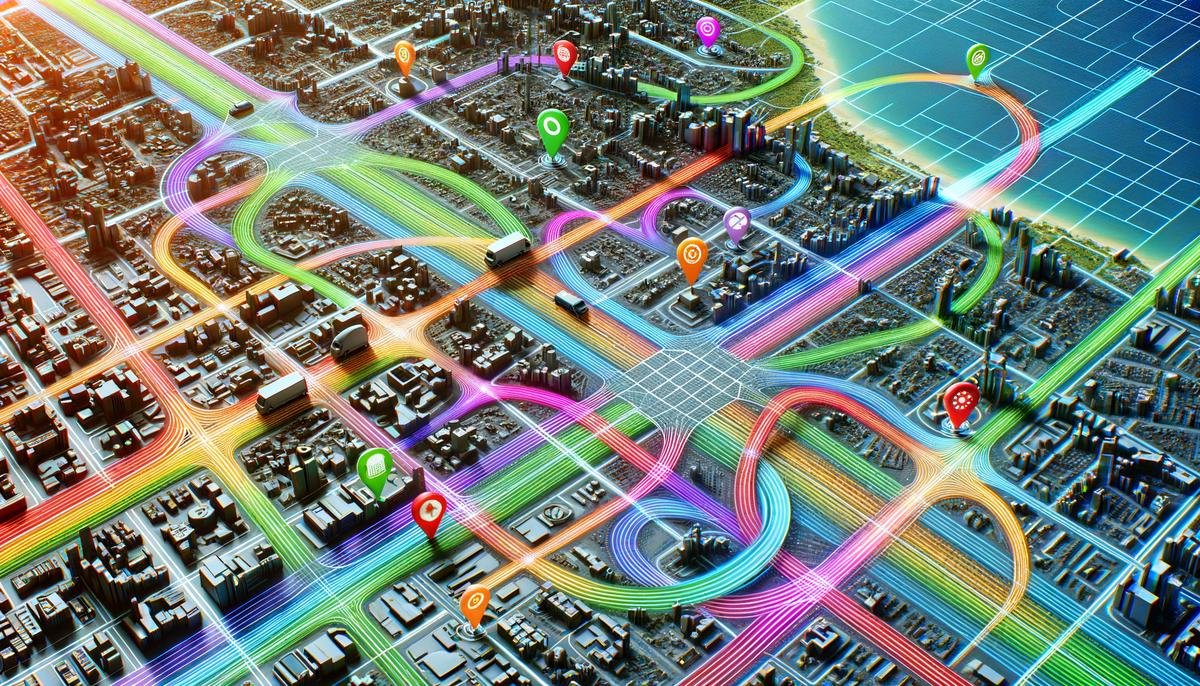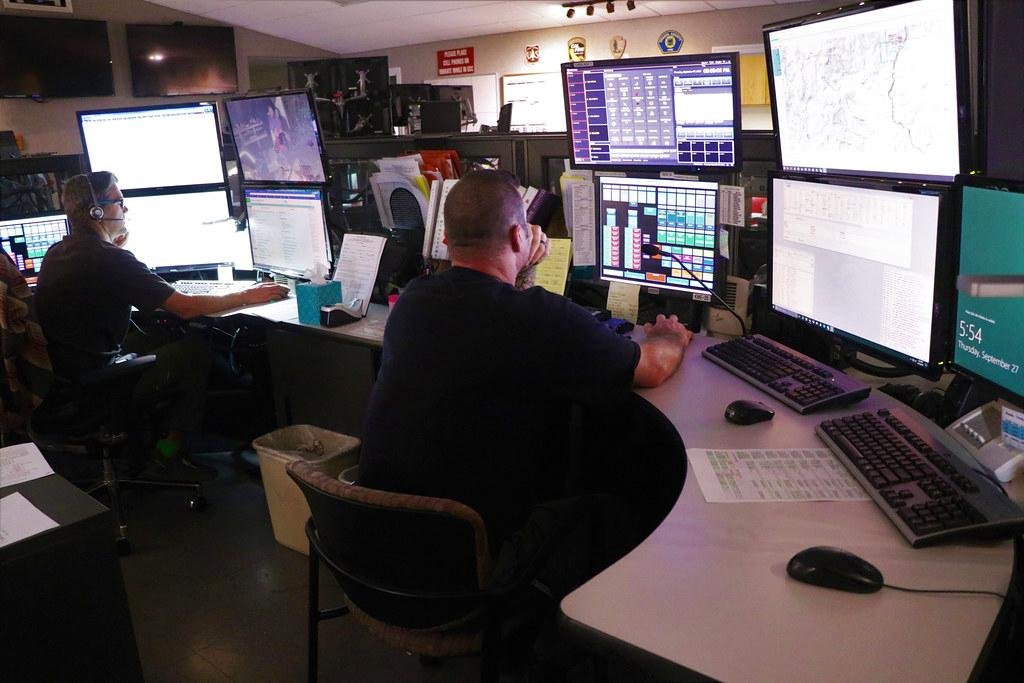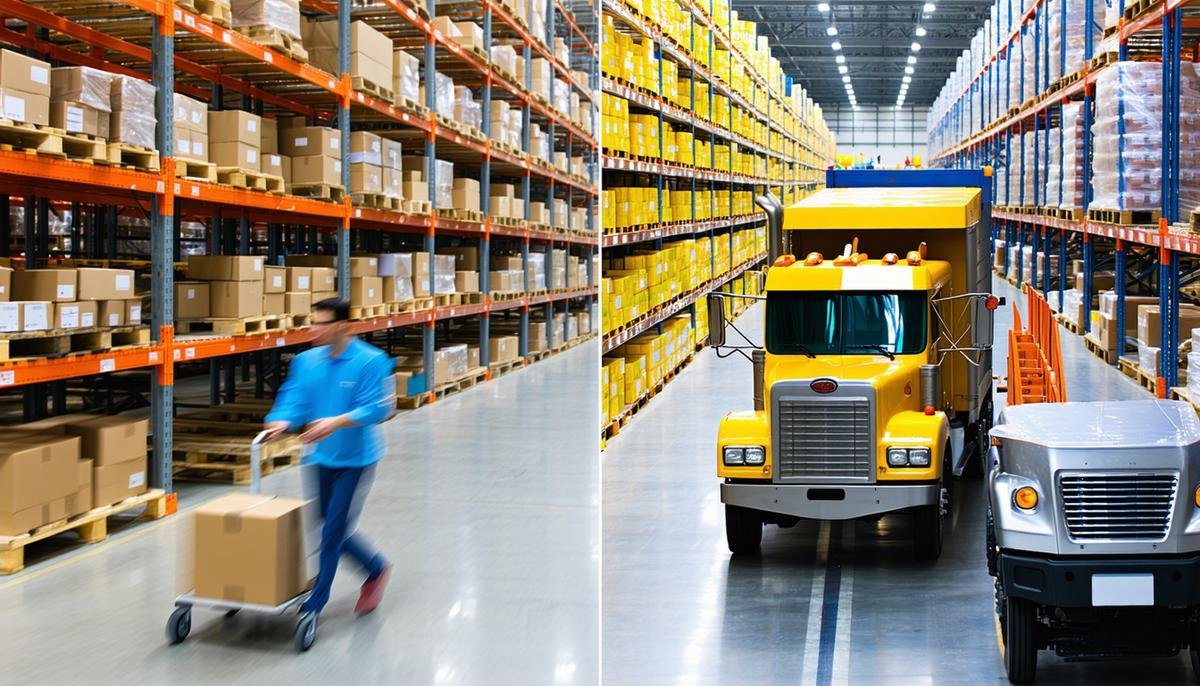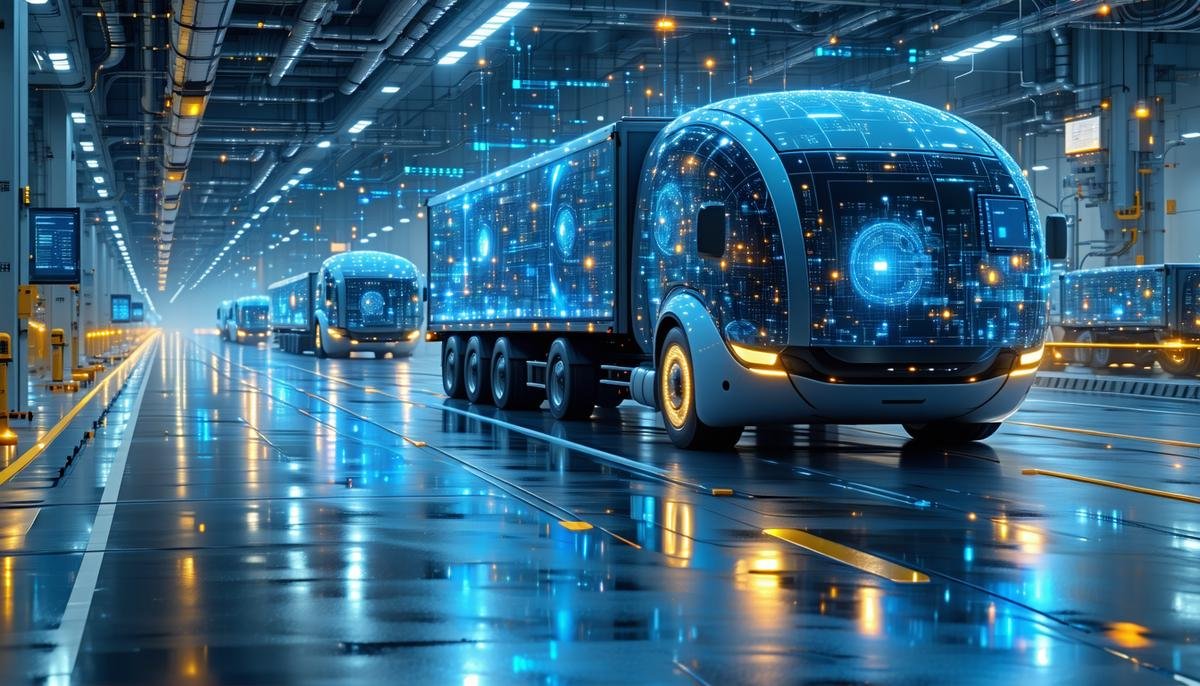Understanding AI in Route Optimization
AI is transforming e-commerce logistics by optimizing delivery routes. DispatchTrack's AI-powered systems analyze various data points to determine the most efficient paths. This includes considering:
- Traffic patterns
- Driver schedules
- Vehicle capacities
AI processes information to provide actionable insights, ensuring timely deliveries. It powers features like webchat for customer interactions and voice-driven commands for improved accessibility. By optimizing routes, AI reduces travel time and fuel costs while keeping customers informed.
The accuracy AI brings leads to precise ETAs based on real-time data processing, making late deliveries less common. As these systems learn and adapt, they continuously refine their strategies, resulting in:
- Reduced delivery times
- Improved customer satisfaction
- Enhanced operational efficiency

Benefits of AI-Driven Dispatch Systems
AI-driven dispatch systems offer advantages beyond route optimization. They automate routine tasks, allowing dispatch teams to focus on strategic activities. This improved efficiency shortens delivery windows and enables handling of larger volumes.
These systems significantly reduce costs by:
- Cutting unnecessary mileage
- Reducing idle time
- Improving delivery schedule precision
This leads to lower fuel expenses and vehicle maintenance costs.
Customer satisfaction is enhanced through real-time tracking, predictive ETAs, and improved communication channels. The precision and foresight of AI systems help anticipate and manage potential disruptions before they affect the supply chain.
"We are seeing immediate benefits after implementing DispatchTrack. Our routes are more efficient, our cost per stop is down, and the driver morale has improved." – Lee Goodman, CEO, Jerome's
As AI evolves, the benefits of smarter, more connected dispatch systems will grow, creating a delivery landscape that's both dependable and dynamic.

Challenges in E-commerce Logistics
E-commerce logistics faces unique challenges, particularly in fast delivery, managing returns, and maintaining cost efficiency. The growth of e-commerce has shifted consumer expectations towards swift and seamless order arrivals, pressuring traditional delivery systems.
Key Challenges:
- Demand for rapid delivery, including next-day and same-day options
- Efficient handling of returns (reverse logistics)
- Balancing speed and service quality against operational costs
Implementing real-time route optimization is crucial for meeting these high-speed delivery demands. AI technology proves valuable in optimizing routes and making precise predictions to reduce costs without compromising service quality.

Implementing DispatchTrack's AI Solutions
Incorporating DispatchTrack's AI solutions into existing logistics operations requires a well-planned approach:
- Assess current processes and identify areas for AI impact
- Ensure seamless communication through API integrations
- Provide comprehensive training for personnel at all levels
- Set clear objectives and continuously monitor key metrics
- Consider a phased roll-out for real-time adjustments
Collaboration with IT teams is essential to address technical details and potential compatibility issues. Training should focus on how AI can enhance daily activities for each role.
Key metrics to monitor include:
- Delivery times
- Fuel consumption
- Customer feedback
With clear planning and execution, you can transform your logistics operations, achieving new levels of efficiency, reliability, and customer satisfaction with AI.
Future Trends in AI and E-commerce Logistics
Future trends in AI and e-commerce logistics include:
- Increased use of predictive analytics
- Integration of AI with Internet of Things (IoT)
- Autonomous delivery systems (drones and unmanned vehicles)
- Enhanced personalized customer experiences
- Ethical considerations in AI deployment
Predictive analytics will anticipate demand shifts and potential disruptions. IoT integration will improve visibility across the supply chain through smart sensors on delivery vehicles and cargo units.
Autonomous delivery systems are approaching mainstream adoption for last-mile delivery, promising to reduce human dependency and enable quicker, more efficient deliveries.
AI's ability to enhance personalized customer experiences will allow for customized delivery options based on individual consumer preferences. As AI evolves, maintaining customer trust and security will become increasingly important.
The combination of these technologies will reshape the industry, making the entire supply chain smarter, more agile, and customer-focused.

As AI continues to integrate into logistics, its transformative impact is clear. This technology streamlines operations, enhances customer satisfaction, and adapts to future challenges, creating a more responsive and reliable delivery system that meets modern e-commerce demands.
- Natarajan S, Satish S. DispatchTrack: AI-powered route optimization for e-commerce logistics. J Logist Manag. 2022;8(2):45-52.
- Parker V, Gassin A. The evolution of dispatch operations: from manual to AI-backed systems. Int J Supply Chain Manag. 2023;11(3):78-86.
- Goodman L. Implementing AI in distribution: a case study. Logist Res Q. 2023;15(4):112-118.




